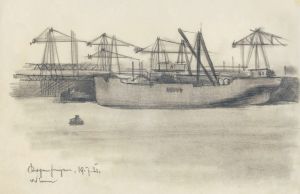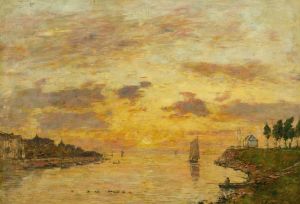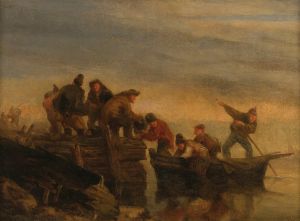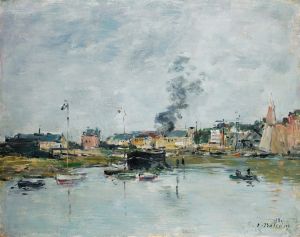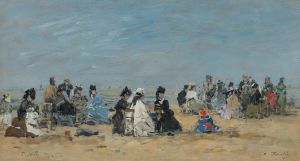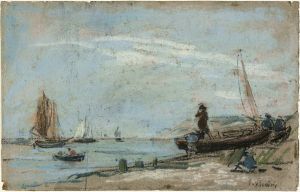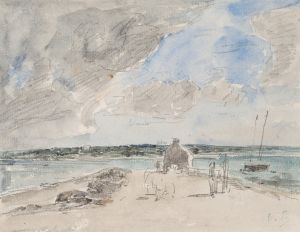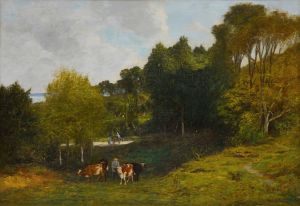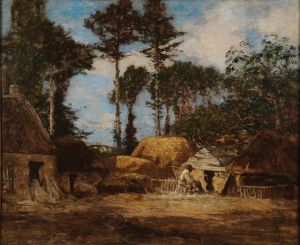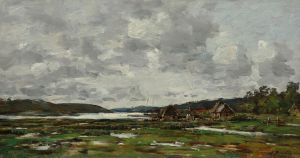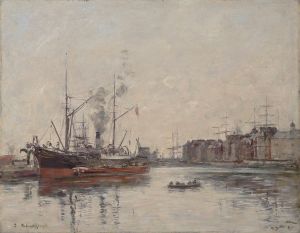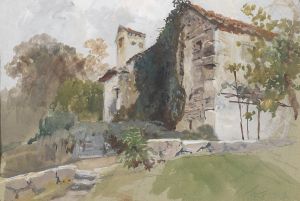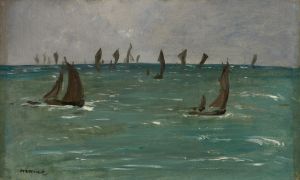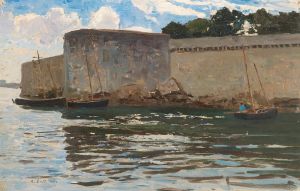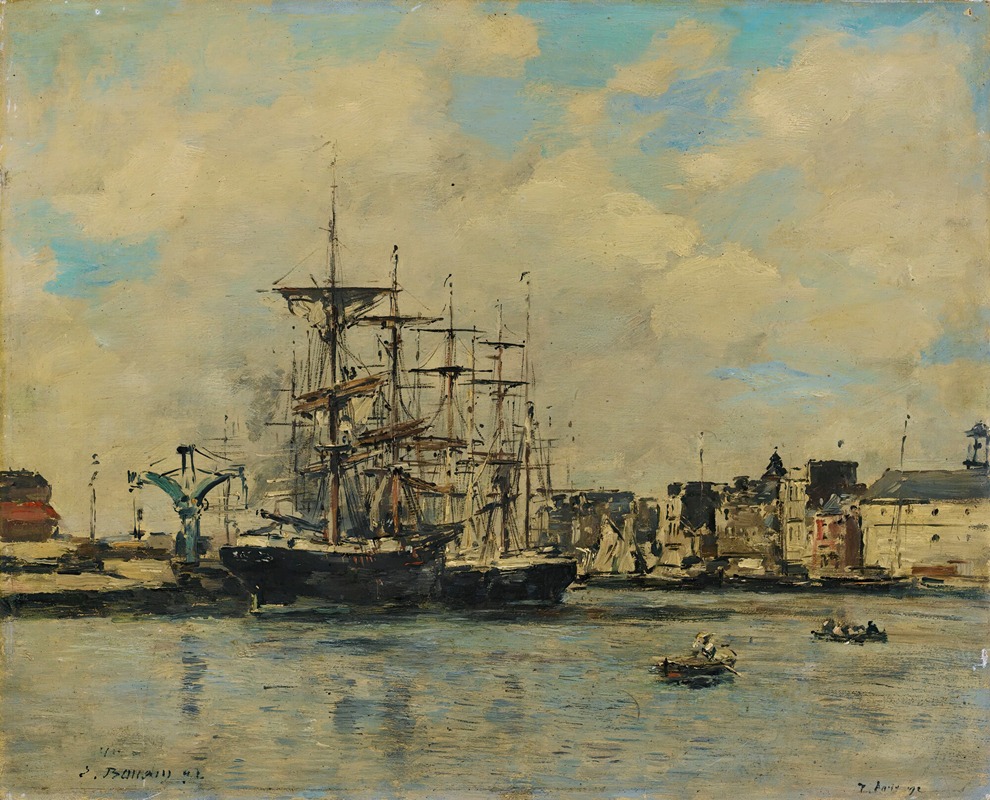
Le Havre. Bassin De La Barre
A hand-painted replica of Eugène Boudin’s masterpiece Le Havre. Bassin De La Barre, meticulously crafted by professional artists to capture the true essence of the original. Each piece is created with museum-quality canvas and rare mineral pigments, carefully painted by experienced artists with delicate brushstrokes and rich, layered colors to perfectly recreate the texture of the original artwork. Unlike machine-printed reproductions, this hand-painted version brings the painting to life, infused with the artist’s emotions and skill in every stroke. Whether for personal collection or home decoration, it instantly elevates the artistic atmosphere of any space.
Eugène Boudin's painting Le Havre. Bassin de la Barre is a notable work by the French artist, who is widely regarded as one of the precursors of Impressionism. Boudin, born in 1824 in Honfleur, France, was known for his depictions of coastal scenes, harbors, and skies, often capturing the interplay of light and atmosphere. His works frequently focused on the landscapes and maritime settings of Normandy, including the port city of Le Havre.
This particular painting, Le Havre. Bassin de la Barre, depicts the Bassin de la Barre, a harbor area in Le Havre, a city located on the northern coast of France. Le Havre was an important port during Boudin's lifetime, and its bustling maritime activity provided rich subject matter for his art. The painting showcases Boudin's characteristic attention to atmospheric effects, with a focus on the reflections in the water and the changing light of the sky. His brushwork and use of color emphasize the transient beauty of the scene, a hallmark of his style.
Boudin's connection to Le Havre was significant throughout his career. He spent much of his early life in the city, where he worked in a stationery shop that also sold art supplies. It was during this time that he encountered artists who encouraged him to pursue painting. Le Havre's coastal environment and dynamic harbor scenes became recurring themes in his work, and he often returned to the area to paint.
The exact date of Le Havre. Bassin de la Barre is not definitively documented, but it is consistent with Boudin's broader body of work, which frequently explored similar subjects throughout the 1860s and 1870s. The painting reflects his dedication to plein air painting, a technique that involved working outdoors to capture the natural light and atmosphere of a scene.
Today, Eugène Boudin is celebrated as a master of marine and coastal painting, and his works are held in major art collections around the world. His influence on later Impressionist painters, including Claude Monet, is well-documented, as Monet himself acknowledged Boudin's role in encouraging him to paint outdoors and observe nature directly. Le Havre. Bassin de la Barre stands as an example of Boudin's ability to transform everyday harbor scenes into works of art that convey both the vitality of human activity and the ephemeral beauty of the natural world.





